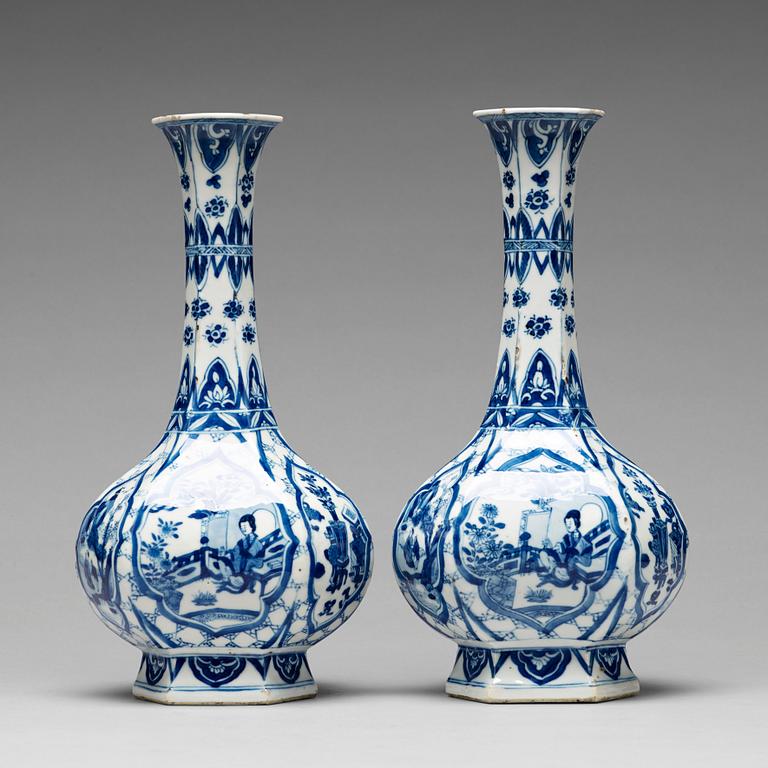VASER, ett par, porslin. Qingdynastin, Kangxi (1662-1722).
Undersidan med bokstaven C eller G. Hexagonala med dekor i underglasyrblått av figurscener samt landskapsmotiv inom reserver. Höjd 30 cm.
Glasyrnagg.
Proveniens
Purchased from Sworders Fine Art Auctions, England, April 2009.
The Avalon Collection Part II.
This collection, which in the main focuses on the Interregnum and Kangxi periods has been both carefully and sensitively formed over the last twenty-five years. The collector, a member of the English Oriental Ceramic Society, has assembled the collection with an eye for provenance whilst purchasing from old European collections, well-established antique dealers and at auction.
Academically, the pieces have been well researched both in terms of their symbolism and narrative themes. In many instances the imagery on the pieces has been referenced to episodes in the romantic and historic novels of Chinese mythology, which were used extensively in the decoration of seventeenth century Chinese porcelain.
Utställningar
Other examples of porcelain with a G-mark to the base are usually of the same high quality - suggesting that this type of mark was indicative of a superior group, custom made perhaps for a discriminating member of the East India Company or a private merchant.
























































